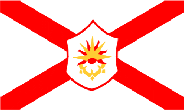The Loss of St Margaret - 1943


27th February 1943:
St. Margaret, 4,312grt, loaded with a general cargo including coal and seven passengers bound for Pernambuco and Buenos Aries joined the 32 ship Convoy ON-165, which departed Liverpool on the 2nd February 1943.
During the crossing the convoy encountered severe weather and many ships became scattered during the storm and were left sailing as stragglers. One straggler was picked off by a U-boat, but the remainder of the ships made it to the east coast of America unscathed by the 1st March.
The St. Margaret having dispersed from the convoy on the 19th February had been proceeding independently when intercepted by U-66 on the 27th February about 1000 nautical miles South-West of the Azores. Hit by one torpedo in the engine room killing three men on duty, the ship remained afloat, but immediately began to settle as the engine room flooded. The ship was immediately ordered abandoned in four lifeboats, of which three were not seaworthy and a number of rafts.
The U-boat fired a further three torpedoes at the stricken ship, which all missed the target and just over an hour later a final torpedo sank the ship in position 27’ 38N 43’ 23W. After questioning the survivors the ships Master (Daniel Davies) and Second Officer were taken prisoner and after questioning both men the Germans eventually put the Second Officer back in his boat but kept the ships Master on board.
The Chief Officer (George Hamilton) was also taken on board for questioning and released after a short time. The ships Master was eventually interned at Milag Nord for the duration of the war.
The remaining survivors having transferred into the only decent boat took two rafts in tow and set course for St. Thomas over 1300 nautical miles to the South-West of their position of sinking. The following day only managing to maintain a speed of one knot, the Chief Officer, George Hamilton who was later awarded a Kings Commendation calculated it would take at least fifty days to reach their destination, so put the survivors on strict rationing. The same day one of the rafts began to break apart in the heavy swell and the occupants transferred into the already overcrowded boat, while ten men remained on the other raft.
On the 2nd March two aircraft were sighted at a great distance, but soon disappeared. This was soon followed by the appearance of two more aircraft and the final flares in the boat were set off. One of the aircraft suddenly altered course and came roaring in across the sea at low level, dipping his wings as he did so in recognition before flying off over the horizon. Just over an hour later smoke could be seen on the horizon and a short time later the American Destroyer USS Hobson picked up all the survivors and landed them at Bermuda.





